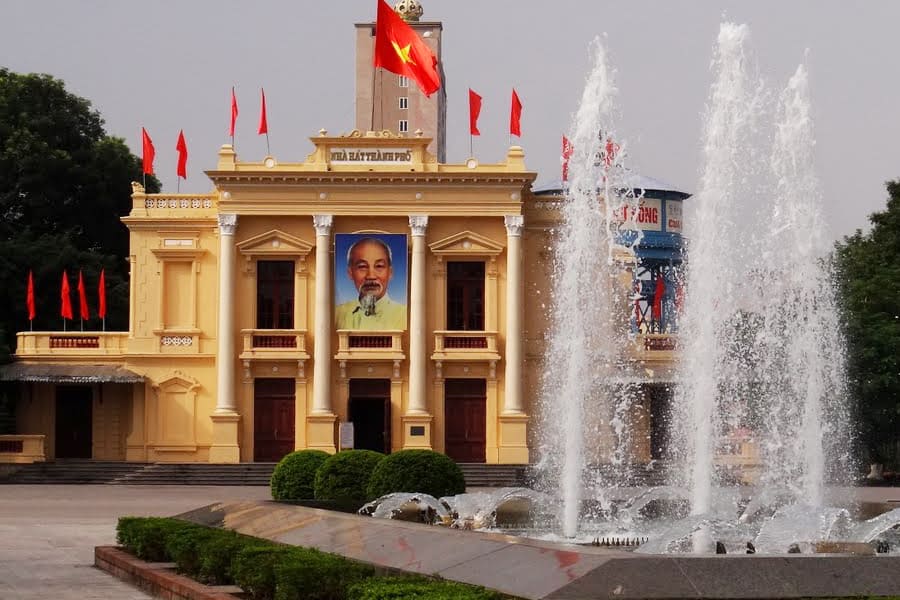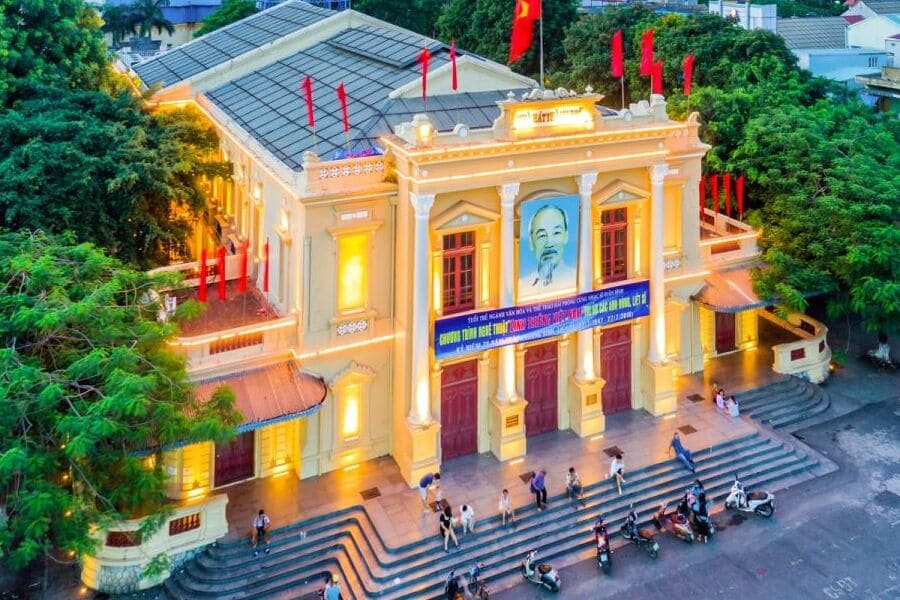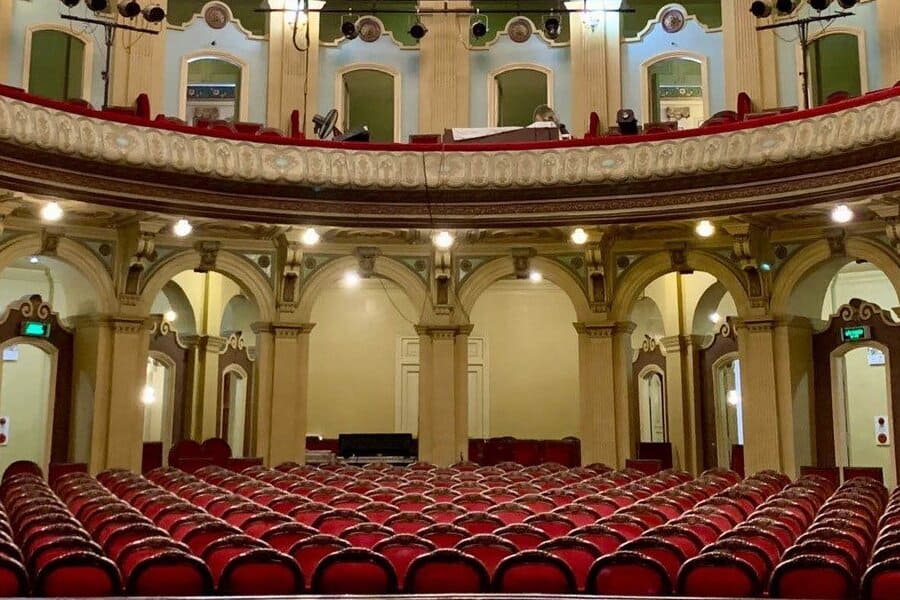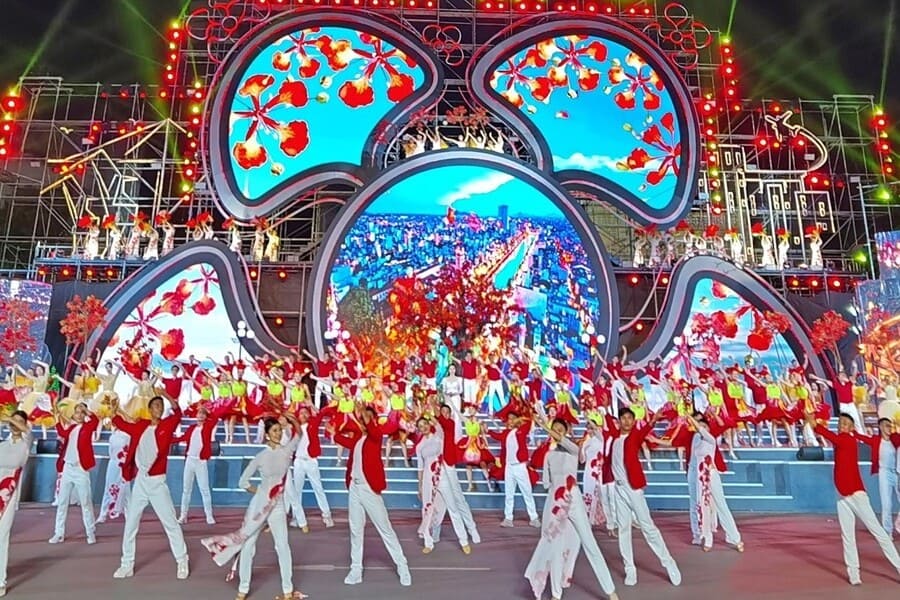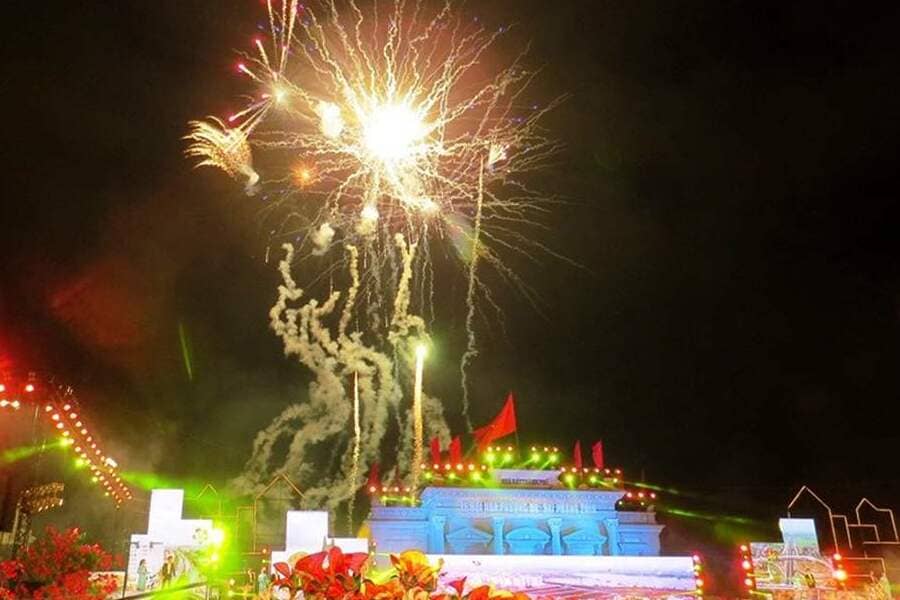Nestled in the heart of Hai Phong, Vietnam, the Hai Phong Opera House stands as a testament to the city’s rich cultural heritage and artistic vitality. This historic landmark, known for its elegant architecture and vibrant performances, serves as a hub for opera, ballet, concerts, and theatrical productions, captivating audiences with its timeless charm and artistic excellence. As a must-visit destination on Vietnam shore excursions, discover the allure and legacy of the Hai Phong Opera House, where artistry meets architectural grandeur in Northern Vietnam.
The History of Hai Phong Opera House
The Hai Phong Opera House holds a poignant place in history, notably during the resistance against French colonial rule. On November 20, 1946, it became a battlefield where Vietnamese soldiers, led by Lieutenant Dang Kim No, bravely held off French forces, including tanks, for a day and night. This heroic stand resulted in the defeat of 50 French soldiers before their sacrifice in defense of the city.
During French colonial times, the opera house was a cultural and political center for the French and wealthy locals. Only French or approved Vietnamese performances were allowed, and access was limited to the affluent. Today, the opera house commemorates significant historical events and hosts cultural festivals, offering a range of artistic performances and entertainment for all to enjoy.
Hai Phong Opera House’s Outstanding Architecture
The Exterior Architecture
Hai Phong Opera House showcases a striking blend of French colonial and neoclassical architectural styles, reflecting its construction during Vietnam’s colonial period in the early 20th century. Situated prominently in the city center, its facade exudes grandeur with a symmetrical layout, elaborate columns, and intricately designed balconies.
The exterior is characterized by its graceful arched windows, ornate cornices, and a prominent central dome adorned with classical motifs. The facade’s creamy-white color scheme contrasts elegantly with the lush greenery of the surrounding gardens, creating a picturesque setting that beckons visitors to explore its historical significance and architectural beauty.
The Interior Architecture
Stepping inside Hai Phong Opera House unveils a lavish interior that transports visitors to a bygone era of opulence and artistic sophistication. The foyer greets guests with high ceilings, polished marble floors, and grand staircases adorned with wrought-iron railings.
The main auditorium, a masterpiece of architectural design, features plush velvet seating arranged in a horseshoe configuration around a stage framed by gilt moldings and velvet curtains. The ceiling is adorned with exquisite chandeliers casting a warm glow over intricate frescoes and ornamental details that adorn the walls.
The acoustics are meticulously engineered to enhance the clarity of performances, making every visit to Hai Phong Opera House a sensory delight that celebrates both its architectural grandeur and its role as a cultural beacon in Northern Vietnam.
What to Expect at Hai Phong Opera House?
Enjoying amazing Artistic performances
Prepare to be enthralled by a diverse array of artistic performances including opera, ballet, concerts, and theatrical productions. The opera house’s stage hosts both local talents and international performers, showcasing the best of classical and contemporary arts.
Checkin and Explore the Outstanding Architecture
Upon arrival, marvel at the opera house’s striking neoclassical facade and elegant design. Admire the intricate details of its exterior, including ornate columns, arched windows, and a majestic central dome. Inside, the grand foyer with its marble floors and ornamental staircases sets the stage for a journey into the opulent world of the performing arts.
Walking around Hai Phong Opera House
Take time to explore the opera house’s interior, where every corner reveals a blend of historical charm and artistic sophistication. Wander through the main auditorium with its plush seating and magnificent stage framed by velvet curtains and gilded decorations.
How to get to Hai Phong Opera House?
From Hanoi to Hai Phong city
- By Car or Bus: From Hanoi, you can travel to Hai Phong by car or by taking a bus. The journey typically takes about 2 to 2.5 hours, depending on traffic conditions and the mode of transport chosen.
- By Train: Another option is to take a train from Hanoi to Hai Phong. Trains depart from Hanoi Railway Station (Ga Hanoi) and arrive at Hai Phong Railway Station (Ga Hai Phong). The train journey takes approximately 2.5 to 3 hours, providing a comfortable and scenic route to the city.
Get to Hai Phong Opera House
Once you have arrived in Hai Phong, the Opera House is centrally located and easily accessible within the city:
- Taxi or Ride-sharing: Taxis and ride-sharing services are readily available in Hai Phong.
- Walking: If you’re staying or exploring nearby, walking allows you to enjoy the vibrant atmosphere and explore other landmarks along the way.
Attractive destinations near Hai Phong Opera House
- Hai Phong Museum: Just a short distance from the opera house, Hai Phong Museum offers insights into the city’s history, culture, and maritime heritage. Exhibits include artifacts, documents, and interactive displays showcasing Hai Phong’s development over the centuries.
- Tam Bac Lake: Situated in central Hai Phong, Tam Bac Lake is a tranquil urban oasis surrounded by parks, gardens, and walking paths. It’s an ideal spot for a leisurely stroll, enjoying views of the city skyline, and relaxing in a peaceful environment.
- Hai Phong Station: Playing a pivotal role in facilitating both passenger and freight transport, contributing to Hai Phong’s connectivity and economic vitality within the northern region of Vietnam.
Hai Phong Opera House stands as a timeless symbol of cultural richness and architectural elegance in Northern Vietnam. From its majestic neoclassical facade to its opulent interiors, the opera house captivates visitors with its blend of historical charm and vibrant artistic performances. As a highlight of Hai Phong shore excursions, this cultural beacon not only preserves Vietnam’s artistic heritage but also fosters a deep appreciation for the arts through its diverse program of opera, ballet, concerts, and theatrical productions.

